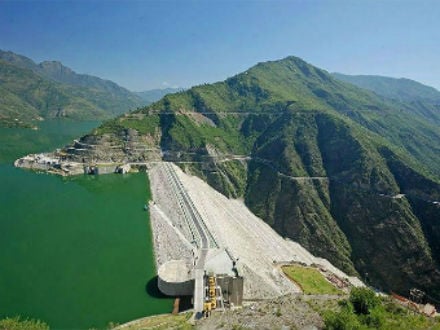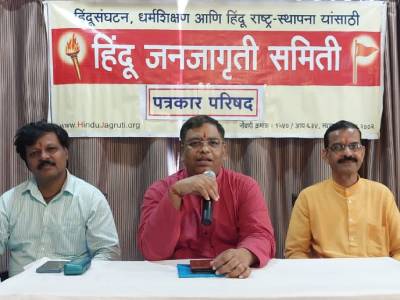
Untreated municipal sewage and industrial toxics are viewed as the worst demons for the Ganga. They pollute the oxygen-rich water, making it unfit even for bathing or washing. But some experts and activists have a different take on the issue. They argue that the perennial river has enough natural flow to cleanse itself. But the problem is that numerous hydro-power projects on feeder streams of the Ganga are screwing up its flow in the Himalayas. Spending thousands of crores to clean Ganga would not help until its normal flow is restored. The same theory applies to the pollution of Yumana. Even a marginal surge in water can flush out a huge quantity of pollutants. This was demonstrated during the Kumbh Mela at Allahabad earlier this year.
The Kumbh Mela experience
The Tehri Hydro Development Corporation (THDC) released 250 cumecs of water from December 21, 2012 to February 20, 2013 and 220 cumecs during the ensuing week to maintain adequate water level at Prayag for the Kumbh Mela. The Uttar Pradesh Government only ensured that existing Sewage Treatment Plants (STPs) in Kanpur and Allahabad worked properly. Even with 100 million devotees taking holy dip the biochemical oxygen demand (BOD) remained within tolerable limits- 7 to 9 mg/l. Without infusion of this fresh water, it was estimated to rise 25 to 30 mg/l.
Hydel projects squeeze the Ganga
The hydel projects in the Himalayas are not few in number. As per the data compiled by the Inter-Ministerial Group (IMG), headed by BK Chaturvedi, Member, Planning Commission there are 69 hydel projects in the upper Ganga Basin. Out of these 17 projects are operational, 25 under construction, 10 projects have been cleared by the Central Electricity authority and 17 projects are under development/review stage. Harish Rawat, the Minister of Water Resources, provided these figures to Lok Sabha on May 2, 2013.
One is appalled at the prospect of these planned projects becoming operational. Their effect on the fragile ecosystem of Uttarakhand would be cataclysmic. The hydel projects threaten the very survival of the Ganga. A depleted Ganga, in turn, would have disastrous effect on the thickly populated Gangetic plains.
The Tehri Dam controversy revisited
Remember the bitter controversy over the Tehri Dam in the 1980s and 1990s? It was the first hydroelectricity project to serrate the ecosystem of Garhwal. A 600 megawatt Tehri Dam project on Bhagirati, a feeder stream of Ganga, was cleared by the Planning Commission in 1972. The environmental discourse in politics was at a nascent stage. It did not factor in the decision. However, the Chipko Movement against commercial deforestation that arose in Chamoli (Pauri Garhwal) became recognised globally. The Tehri project could not avoid controversy for long.
The Tehri Baandh Virodhi Sangarsh Samiti (TBVSS) formed in 1978 was able to stir up support for anti-dam protests. The dam work was abandoned in the mid-1980s after a Government review committee criticised the project on environmental grounds. But in the 1986, the project staged a come back in a larger avatar backed by technical assistance and Rs 2000 crore financial support from the then USSR. It is interesting to note that Jawaharlal Nehru, notwithstanding his fascination for high dams and Soviet model of planning, had left the sacred river unmolested. Perhaps, this had something to do with his love for the Ganga, which flowed by his native town Allahabad. But his grandson Rajiv Gandhi dealt a major blow to the river.
Rajiv Gandhi put the project back on track despite the Environmental Working Group for Tehri Dam (1987) observing that – a) some segments of the reservoir slopes are unstable b) deforestation and degradation specially in Bhagirathi is extensive c) the project is located in a highly sensitive seismic zone; and d) the failure of the dam or the hill slopes would threaten the entire population of Rishikesh and Haridwar. The Government took refuge in the technicalities that the working group had not categorically rejected the project. It is ironic that Rajiv Gandhi, admired for initiating the Ganga Action Plan in 1986, did this singular damage to the existence of Ganga later the same year.
The project was not to be derailed even by 74-day hunger strike by environmentalist Sunderlal Bahuguna in 1996. The Hanumanth Rao Committee (1997) recommendation on reviewing the project remained unimplemented. In 1998, Tehri Hydro Development Corporation was incorporated as a joint venture between Government of India and the Government of Uttar Pradesh.
Corporate lobby threatens the Ganga
The carving out of Uttarakhand in November 2000, led strengthening of corporate hold on the State. The new State wanted to have surplus power, which could be sold off to other States. This is regardless of the Government that has been in power. The present Chief Minister Vijay Bahuguna also favours big dams. Only Gen BC Khanduri had realised the dangers from big dams. He had emphasised on non-invasive micro-hydel projects.
The Ganga might be plagued by problems of pollution downstream. But it is witnessing a foeticide up in the mountains. The hydropower projects on the feeder tributaries of the Ganga like Alaknanda, Bhagirati and Mandakini are obstructing the formation of the Ganga. This has led to visible desertification of the river basin in Garhwal. They give the lie to the UPA Government’s symbolism of declaring the Ganga as the National River or recognising the Garhwal region as eco-sensitive zone. The Tehri Dam was likened to the Damocles Sword hanging on northern India. Today several scimitars, daggers and knives are also dangling. But then there are experts, activists and some well-meaning politicians across parties who are determined to save the Ganga and its basin.
Source : Niti Central




